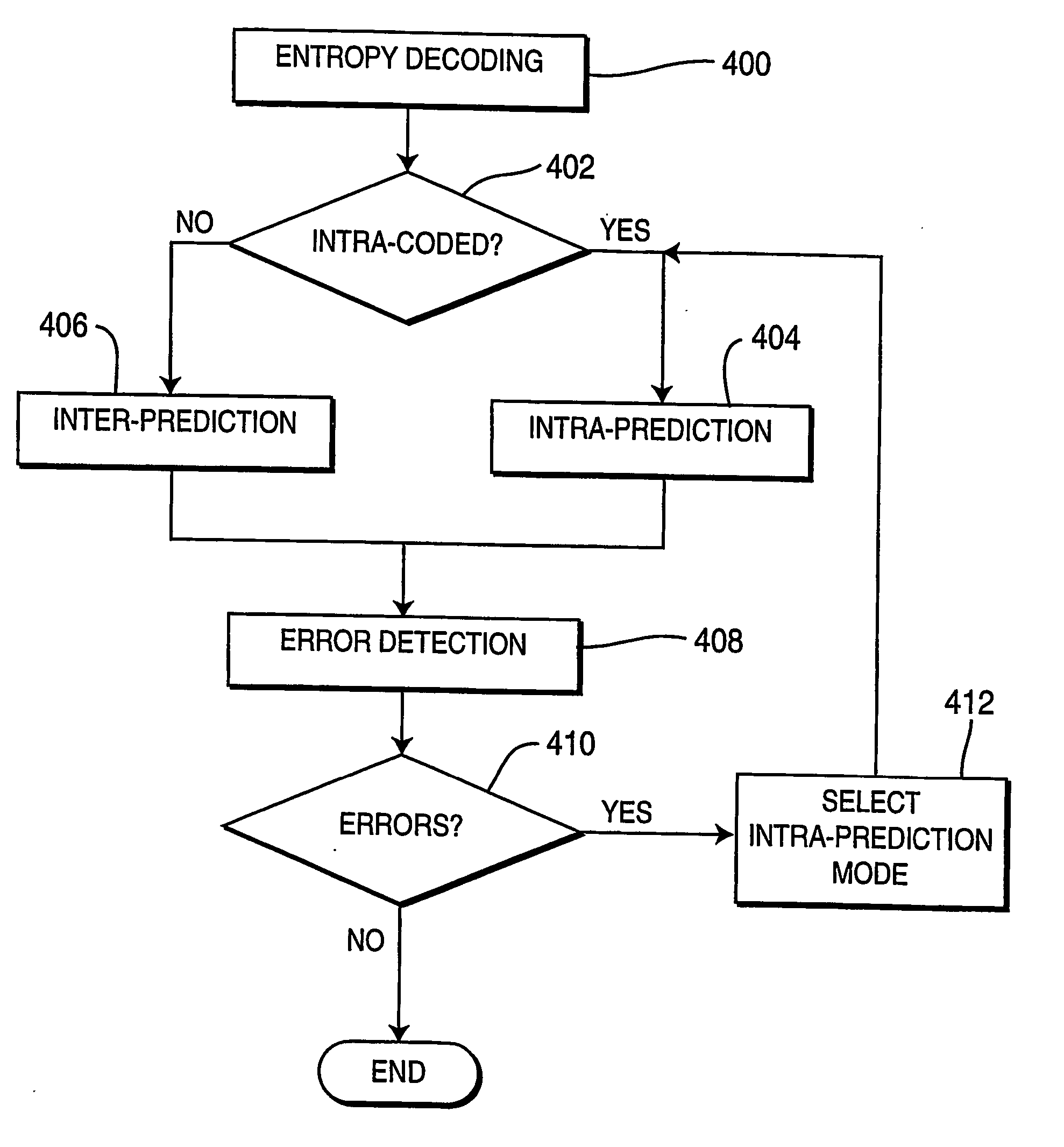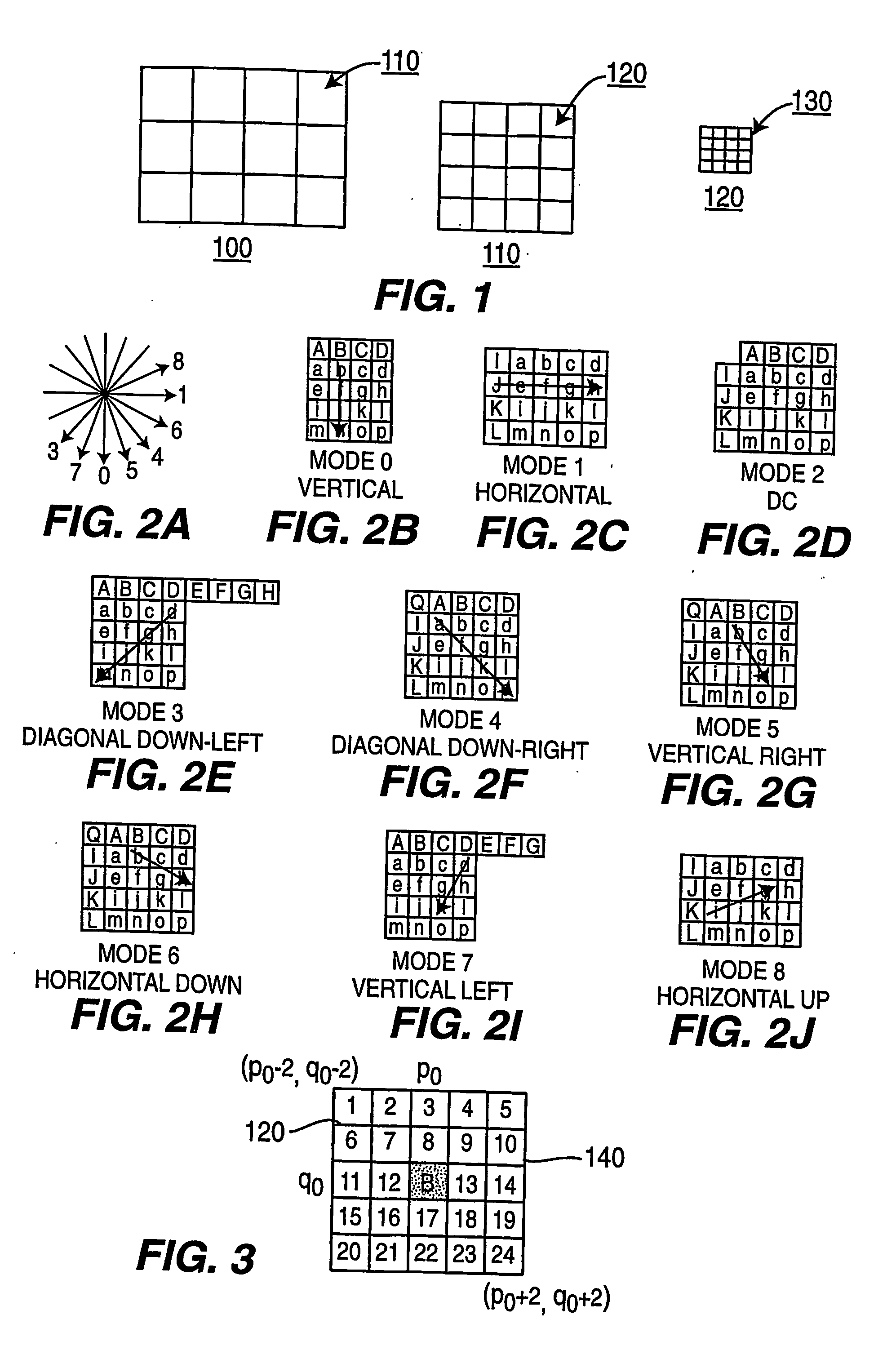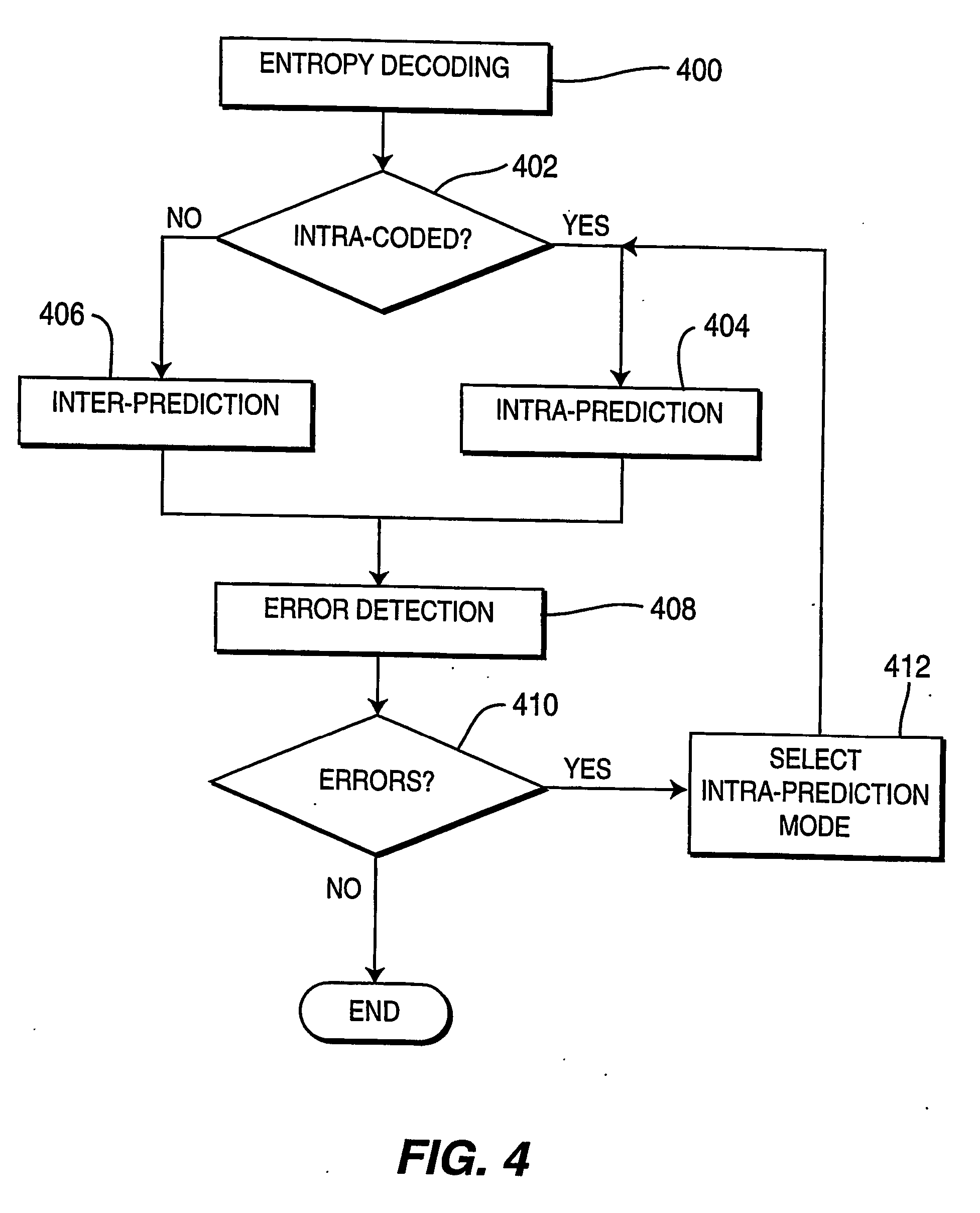Spatial error concealment based on the intra-prediction modes transmitted in a coded stream
- Summary
- Abstract
- Description
- Claims
- Application Information
AI Technical Summary
Benefits of technology
Problems solved by technology
Method used
Image
Examples
Embodiment Construction
[0025] Block-based video compression techniques, such as embodied in the proposed ISO / ITU H.264 video compression standard, operate by dividing a picture into slices, each slice comprising a set of macroblocks or macroblock pairs, with each macroblock coded in accordance with the standard. Macroblocks are typically defined as squared regions of 16×16 pixels. For coding purposes, macroblocks can be further partitioned into sub-macroblocks not necessarily squared. Each one of the sub-macroblocks can have different coding modes when the macroblock is encoded. For ease of discussion, a block will be referred to as a sub-macroblock of 4×4 pixels. FIG. 1 depicts the partitioning of a coded picture 100 into macroblocks 110, with each macroblock 110 partitioned into blocks 120, and each block partitioned into pixels 130. The partitioned image 100 of FIG. 1 comprises n rows by m columns of macroblocks 110 where n and m are integers. Note that the number of macroblocks within a picture varies...
PUM
 Login to View More
Login to View More Abstract
Description
Claims
Application Information
 Login to View More
Login to View More - R&D
- Intellectual Property
- Life Sciences
- Materials
- Tech Scout
- Unparalleled Data Quality
- Higher Quality Content
- 60% Fewer Hallucinations
Browse by: Latest US Patents, China's latest patents, Technical Efficacy Thesaurus, Application Domain, Technology Topic, Popular Technical Reports.
© 2025 PatSnap. All rights reserved.Legal|Privacy policy|Modern Slavery Act Transparency Statement|Sitemap|About US| Contact US: help@patsnap.com



